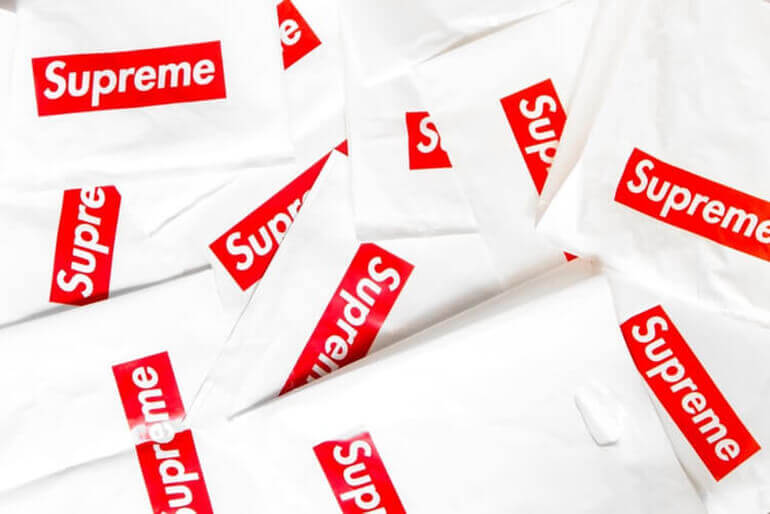Are you new to the eCommerce business and wondering what is dropshipping? You have probably heard about it but aren’t sure how it works? The drop shipping model has become widely popular, but that doesn’t necessarily mean it’s easy and for everyone. We have prepared detailed guidelines to help you determine whether this type of eCommerce model could work for your company or not.
What Is Dropshipping and How Does It Work?
If you have brainstormed small business ideas and decided to try one out, you’ll probably be tempted to implement the drop-shipping model. Understanding how does drop shipping work and what it is will help your brand thrive. In short, this is a method of retail fulfillment where a store does not hold products in stock. Instead, whenever it sells goods using this method, the store purchases it from a third party and directly delivers it to the customer. This means that the seller doesn’t have to deal with packing, delivering, or maintaining an inventory. Yes, you’re probably hugely relieved about that inventory. That is the most significant difference between the drop shipping model and the standard retail one. To fulfill the order, you as a seller, will buy inventory as needed from the manufacturer or wholesaler.
The drop-shipping method, however, is not a get-rich-quick scheme. It does sound like easy money: you sell the products from other people and take your share. Yet, we must admit that it’s far from easy when you add all the challenges, drawbacks, and day-to-day management. However, you should not let this scare you. We are here to help you learn how dropshipping works, its advantages and disadvantages, and what strategies you can use to build a successful business. Different types of businesses can benefit greatly when they approach it the right way.

What Are the Benefits of Drop Shipping for Your Business?
If you’re an aspiring entrepreneur, know that the drop-shipping model is accessible and could be just the right thing for you. For instance, you can quickly test various business-related concepts with it, which will help you learn a lot about identifying and promoting in-demand goods. Let’s get on to other benefits of using the drop-shipping model.
Low Investment When Starting Your Drop-Shipping Business
Perhaps the dropshipping’s most important benefit is setting up an online store and deciding on eCommerce payment options without spending thousands of dollars on inventory beforehand. Unless you have already made the sale and have been paid by the customer, you don’t have to buy a product. Of course, you can start sourcing goods without substantial up-front inventory investments and launch a profitable business with very little capital. Since you’re not obliged to sell-through inventory purchased up-front, like in the case of a traditional retail company, there will be less risk involved when starting a drop shipping store.
Dropshipping Will Allow You an Easy Start
It’s much easier to run an e-commerce company when you don’t have to deal with any physical product. You won’t have to worry about the following things:
- Paying or managing a warehouse
- Shipment or packing ordered goods
- Controlling inventory for accounting purposes
- Handling shipments inbound and returns
- Continuous inventory ordering and stock level control.
Low Costs of Running Your Business
Since you won’t be dealing with purchasing stockings or warehouse management, your overall expenses will be as low as it gets. Actually, plenty of successful drop-shipping stores are home-based businesses that require just a little more than a laptop and some recurring operating expenses. These costs are likely to rise as you expand, but they’ll still be relatively small, especially when compared to conventional brick-and-mortar companies.
Work From Anywhere You Want
A drop-shipping company can be run from just about everywhere. You just need to have internet access. You can manage your eCommerce company as long as you can effectively connect with your suppliers and clients.
Try It Out Before You Decide for Sure
Another aspect of drop shipping that makes it so great is that you don’t have to commit to it right away. You can test the degree to which the customers are interested in any additional products. This applies to both small and large businesses, as well as new companies and the ones with an already established clientele. The accent is on the fact that you can gauge what products are being sold without having to purchase them in advance.

Why Dropshipping Is Bad? Disadvantages of Using This Type of eCommerce Model
With all previously mentioned benefits, anyone who’s about to start an online store or expand their product offering can benefit from the drop-shipping method. Yet, there are also a couple of downsides. Here are some shortcomings you should take into consideration.
How Profitable Is Dropshipping? If You’re Working on a Small Scale, It Probably Won’t Pay Off
Drop-shipping is very competitive because, as we could see, it’s easy to start with minimal overhead costs. Several competing retailers will set up an online shop and sell goods at rock-bottom rates to raise revenue. Since they have spent very little getting their online company started, they can only afford to work on minuscule margins. Apart from that, you also must remember that most of the profit from your sale will go to a supplier. Therefore, it will be very hard to cover the expenses of maintaining the website, advertising costs, managing orders for sale, and office hours expenses. Don’t forget that the profit is highly dependent on traffic. Anyone starting from scratch will be struggling until they build up a client base, which could last for a long time. Thus, avoid common mistakes business owners make and use the drop-shipping model when you already establish a strong clientele base.
There Might Be Some Inventory-Related Issues
Those who stock all of their own products can keep up with the items being in and out of stock. Yet, if you source items from multiple warehouses or manufacturers, who are also working for many other merchants, know that the number of stored supplies changes daily. The good news is that nowadays, dropshippers can find a wide range of apps to help them sync with the supplier. They can pass on any order to suppliers in a few clicks and see in real-time just how much goods they have.
Sending Goods From Different Manufacturers to a Customer
You’ll most likely experience some challenges with the shipment expenses. Many dropshippers actually work with several manufacturers, as you probably will too. The products found on your website will be sourced from various suppliers and, thus, complicate shipment expenses. For instance, a customer can place an order for three products, all available from different manufacturers, and there will be three different shipment fees.
Is Dropshipping Illegal?
The answer is no. The drop-shipping model is entirely legal. Yet, depending on your supplier, there might be some legal issues. It’s essential to protect yourself with a contract. Also, you’ll maybe encounter some suppers that aren’t as legitimate as they claim to be. Remember that you even don’t know where the products come from.
You’ll Have to Be Extra Careful When Choosing Suppliers
Since the merchandise is not yours, you’ll probably be in a position of taking responsibility for something you’re not to blame. Low-quality and mediocre suppliers can damage your company’s reputation just by low-quality packing, missing items, or botched shipments. Even the best ones can make some mistakes while fulfilling orders. Also, you’ll lose a significant sum if the order turns out to be fraudulent, including:
- Related chargeback fees
- Customer’s transaction expenses
- The sum you already paid to the supplier for the shipped item.
Building a Brand Will Be Challenging
Branding a product is the most significant factor in eCommerce. Since you’ll be selling other peoples’ products, you won’t be credited no matter how great you do your job. No matter how amazing the product you’re selling through your website is, your customers will focus on the brand itself. And thus they’ll forget entirely about the shopping experience. Ultimately, the logo on the products’ box is not yours.

How to Use Drop-Shipping to Your Advantage
You could see all the benefits of using this model as well as some of its disadvantages. But after all, if you know how to approach it, the drop-shipping model can greatly benefit your company. Let’s see how you can turn it to your advantage.
Use the Drop-Shipping Model to Research the Market
Instead of spending money packing up the warehouse with unpredictable items, you can use the drop-shipping model for temporary projects and minimize the risk when trying out new goods. Rather than just finding whether the item will sell or not, you’ll have a clearer idea of how much it can be sold for, which will further help you determine profitable quantity for your initial stock. This is undoubtedly important when experimenting with new product types, which again almost always carries some risk.
Protect Your Brand From Overselling
As someone handling an eCommerce company, know that the market fluctuations won’t always be predictable. Instead of raising stocking-related fees, finding a drop-shipping supplier as a backup will save you some money without losing the sales themselves. This can be particularly helpful during the seasonal overflow and is a perfect protection against the challenges facing all retailers. For example, if a natural disaster destroys your warehouse, you’ll still be able to execute pre-made orders by drop-shipping items from elsewhere.
Make Strategic Plans When It Comes to Delivery
The shipment complications will most certainly give you headaches. If your customer is far away from your fulfillment center or a warehouse, know that the delivery fees will be higher. The problem with locations that are outside of your profitable areas can be solved with the drop-shipping model:
- If storage or shipment fees are too high and cannot justify you launching a new warehouse center.
- Suppose there’s an issue regarding extra fees or taxes, like sending a delivery out of the state or even out of the country. The drop-shipping can pull you out of the red in such cases.
Apart from testing the drop-shipping model in market research, use it to test out some new locales. Try it out in a new location and see if it’s worth opening a facility there.
Items That Will Cost More to Store and Ship
You are probably already familiar with the fact that some items cost more to stock and deliver than others. In some cases, drop-shipping them could be more beneficial for you than storing them yourself. The goods that necessitate extra costs for storing or delivering include:
- Large items that take too much space and their sale just doesn’t cover the storage fees
- Shipment for heavy items can also be costly
- Fragile items that require special handling and your supplier will most likely be better equipped to pack and ship it
- Valuables such as antiques and fine jewelry that demand special attention and additional security
- Items that require special conditions, such as the ones sensitive to light or items that have to be kept frozen.
There’s no point in paying for storage units or shipment fees if your company is not specialized in handling these types of goods. However, by using the drop-shipping model, you can still keep your customers satisfied.

Should I Try Out the Drop-Shipping Model?
And we have come to the end of this article on dropshipping the best ways to use it. Hopefully, now you have a clear picture of its pros and cons. Use the tactics mentioned above, apply them correctly, and build up your company. You should keep in mind that as a dropshipper, you must be very careful and take special precautions regarding credit card fraud prevention. Hence, it’s important to have a reliable credit card processing services provider when starting for the first time. All other merchant services should be covered as well.
Finally, just remember not to rely on the drop-shipping model too much if you’re brand new to the eCommerce business concept. In such a case, try out on a small scale until you build up a successful brand for yourself. Let the drop-shipping model be just a means to an end, not the end in itself.







